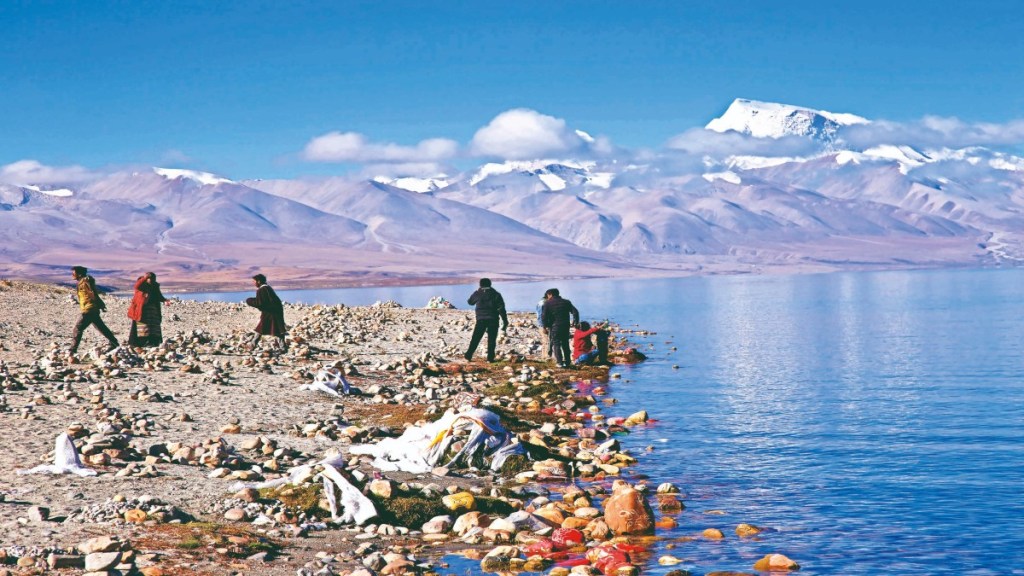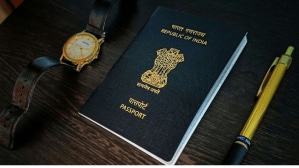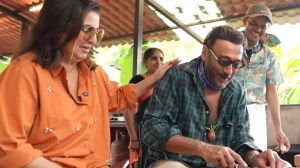As the summer of 2025 will see the resumption of Kailash-Mansarovar yatra after a five-year hiatus, with an announcement by India and China, government officials have been asked to be prepared, say officials at Kumaon Mandal Vikas Nigam (KMVN), the nodal agency for the yatra on the Indian side. Both the sides will discuss its modalities with relevant mechanisms as per existing agreements.
“Officials at the ministry of external affairs have told us that we should be prepared to facilitate the yatra even at the last moment so that the pilgrims don’t face any difficulties. We have been asked to recce the areas where camps will be set up,” say the officials at KMVN.
As the yatra will resume after five years, the numbers of pilgrims will be higher as compared to the previous yatras, official sources tell FE. “I am estimating 1,600-2,000 pilgrims might participate this year because accommodation and transport have improved in the region. Even if we have 20 batches with 60 yatris each, this will be a very good response,” said Dhan Singh Bisht, yatra manager in Dharchula KMVN base camp. Dharchula in Pithoragarh district of Uttarakhand serves as a starting point for Kailash Mansarovar yatra through Lipulekh pass.
“For the past two months, we have been discussing the yatra and we have been put on high alert. This will be finalised in March. We were asked about ground details that we sent to Delhi and we have been preparing keeping 60 yatris each in 18 batches in mind,” said Bisht. Tour companies have already opened registrations for the yatra and are offering packages that include aerial darshan of Mount Kailash by chartered flight starting from Rs 40,000 and going to Rs 2,10,000, besides a helicopter tour from Kathmandu priced at Rs 2,55,000.
Vishal Gogia, founder & CEO of Max Holidays, one of the tour operators offering Kailash Mansarovar packages, says every year about 20,000 pilgrims and trekkers visit Mount Kailash from different parts of the world. The average expense is $3000-$4500 per head for the sojourn. He expects that China’s government may allow 30,000-35,000 pilgrims this year overall.
Direct flight between the countries will also resume, though more details are awaited on this front. IndiGo, which previously operated flights to China, said it is awaiting more clarity and updates from the government on restarting direct services to the neighbouring country.
Kailash Manasarovar Yatra is held between June and September, through the two official routes of Lipulekh Pass (since 1981) in Uttarakhand and Nathu La Pass (since 2015) in Sikkim till 2019, after which it was suspended due to Covid and remained halted following subsequent political tensions between India and China. The MEA charges Rs 1.8 lakh per person for the yatra through Lipulekh Pass. The second route through the Nathu La Pass in Sikkim is motorable and was started in 2015. The approximate cost for undertaking the yatra through this route is about Rs 2.5 lakh per person.
In India, an average of 1,000 pilgrims have participated in the pilgrimage organised by the MEA so far passing China through Lipulekh Pass in Pithoragarh district. Usually, the yatra through Lipulekh has 18 batches with 60 to 65 people maximum.
The yatra through Lipulekh Pass was last held in 2019 where a total of 18 batches comprising 1,005 yatris through Lipulekh Pass and 10 batches comprising 341 yatris through Nathu La Pass undertook the yatra, according to MEA’s annual report 2019-2020. According to reports, it was the highest number of yatris in a given year to perform the pilgrimage through the traditional route passing through Uttarakhand. In 2018, 893 people completed the yatra, while the number was 921 in 2017. In 1981, only 53 people had participated in the yatra which was conducted with three batches of pilgrims.
The trip to Kailash Mansarovar takes two to three weeks through Sikkim or Nepal routes. Lipulekh route had a trek of 90 km through high altitude terrain. The government said with the completion of road connectivity from Dharchula to Lipulekh (China Border) known as Kailash-Mansarovar Yatra Route in 2020, the trek has been cut short by many days. “Earlier, people had to walk for at least six days but now the walking distance on the India side is just one kilometer and an equal distance on the China side too. This will definitely increase the number of tourists. Earlier, it used to take at least six days to reach Lipulekh on a pony-porter. Now since the road is motorable, we can use the six days to get them acclimated, and they can travel in a vehicle,” said Bisht.
At Lake Mansarovar, pilgrims frequently perform the ‘Kailash Kora’ or ‘Kailash Parikrama’, which takes roughly three days to finish. The Indian government, through the MEA, manages the Indian leg, including briefings, medical tests, and transport arrangements. Chinese authorities handle logistics, accommodation, and transport within Tibet after the pilgrims cross the Lipulekh Pass.
Pilgrims travel from Delhi to the Lipulekh Pass via Kathgodam, Dharchula, and the Nathu La Pass in Sikkim, taking a mix of AC and non-AC coaches. Beyond the Lipulekh Pass, Chinese authorities oversee transportation and logistics in Tibet. Before embarking on their trek, pilgrims undergo medical checks in India. Before entering China, Indian authorities verify passports and obtain visas. Both countries have built infrastructure along the route, including highways, night stops, and camping areas. The Chinese side provides amenities for the Kailash Mansarovar Parikrama, as well as hotels in Taklakot and other locations. In mountainous areas, Indian authorities give support from the Indo-Tibetan Border Police (ITBP), while the Chinese side ensures security within Tibet. Both governments collaborate to protect the safety and well-being of pilgrims.
However, according to private tour operators, there are other routes, each with different starting points, transportation modes, durations, and costs. For example, the overland route through Kathmandu can take up to 14 days for Rs 1,95,000 which involves extensive road travel and a bus journey from Kathmandu to the Nepal-Tibet border, followed by overland travel to Mansarovar Lake in Tibet from where Mount Kailash can be viewed. Similarly, there are helicopter routes through Lucknow which takes about 9 days for Rs 2,20,000, and through Kathmandu that takes about 11 days for Rs 2,35,000. There is another route through helicopter from Nepalgunj which takes about 3 days for Rs 5,20,000 and through Lhasa, which takes about 15 days for Rs 2,65,000.
The local economy in places like Dharchula gets a boost for three to four months, especially for the pony-porters. Bisht said the pony-porters can earn up to Rs 20,000 a week in the yatra months, more than 50% than usual days. When the yatra was cancelled for the second year in a row in 2021, KMVN incurred a revenue loss to the tune of Rs 5 crore in that year.
“Thousands of devotees are waiting to get permission to visit the holy land. The opening of the Kailash Mansarovar routes for Indians will help not only the tour operators, transporters, guides and others in India, Nepal and Tibet, but it will be a great relief for a large number of locals in the region whose livelihood depends on such tourism activities,” says Gogia of Max Holidays.
The resumption of the yatra comes at a time when spiritual tourism is booming in India. “It’s true that spiritual tourism in India is witnessing unprecedented growth, with a 21.4% increase in pilgrimages driven by major religious events like the Maha Kumbh Mela. Destinations such as Ayodhya, Varanasi, Haridwar, and Tirupati are experiencing heightened interest. Regarding the Kailash Mansarovar Yatra, its resumption has sparked great excitement. This sacred trek, known for its spiritual significance and high-altitude challenges, is set to attract a surge in devotees seeking transformative experiences,” said Rikant Pittie, CEO & co-founder, EaseMyTrip.









